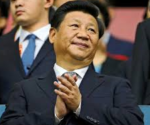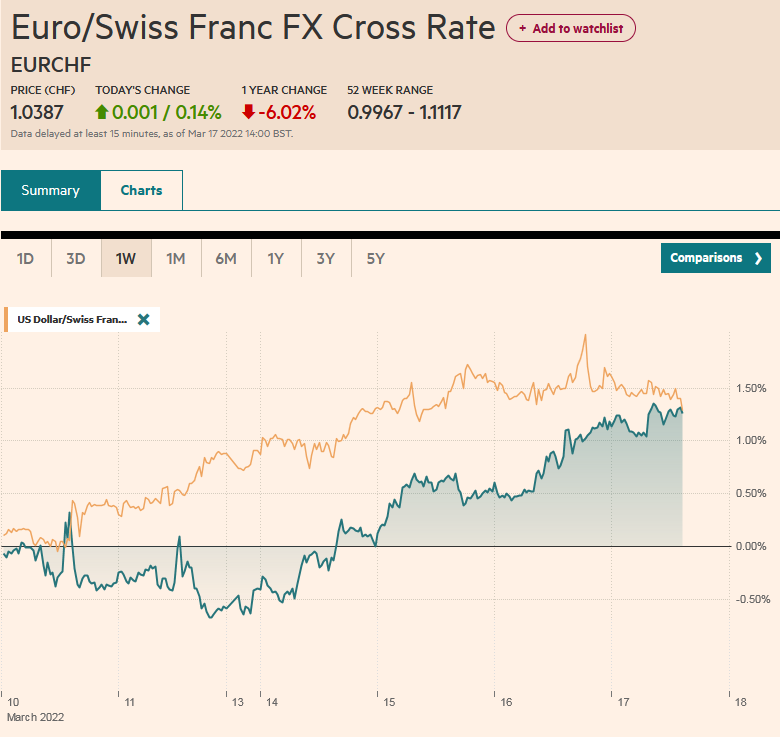Overview: The sharp sell-off in US equities yesterday, led by tech, is weighing on today’s activity. Most of the large Asia Pacific markets excluding Japan and India lost more than 1% today. The three-day rally in Europe’s Stoxx 600 is being snapped today. US futures are posting small losses. The US 10-year yield is little changed around 3.17%, while European benchmarks are narrowly mixed, with the periphery doing better than the core. The dollar is enjoying a firmer bias against most of the major currencies but the Swiss franc and Norwegian krone. The Antipodeans and yen are the poorest performers today. Among emerging market currencies, outside of the Russian rouble, a couple central European currencies and the Chinese yuan are showing a little resilience in the
Topics:
Marc Chandler considers the following as important: 4.) Marc to Market, 4) FX Trends, Brazil, China, Currency Movement, Featured, Germany, inflation, newsletter, Russia, Spain, Turkey, US, USD
This could be interesting, too:
Nachrichten Ticker - www.finanzen.ch writes Die Performance der Kryptowährungen in KW 9: Das hat sich bei Bitcoin, Ether & Co. getan
Nachrichten Ticker - www.finanzen.ch writes Wer verbirgt sich hinter der Ethereum-Technologie?
Martin Hartmann writes Eine Analyse nach den Lehren von Milton Friedman
Marc Chandler writes March 2025 Monthly
Overview: The sharp sell-off in US equities yesterday, led by tech, is weighing on today’s activity. Most of the large Asia Pacific markets excluding Japan and India lost more than 1% today. The three-day rally in Europe’s Stoxx 600 is being snapped today. US futures are posting small losses. The US 10-year yield is little changed around 3.17%, while European benchmarks are narrowly mixed, with the periphery doing better than the core. The dollar is enjoying a firmer bias against most of the major currencies but the Swiss franc and Norwegian krone. The Antipodeans and yen are the poorest performers today. Among emerging market currencies, outside of the Russian rouble, a couple central European currencies and the Chinese yuan are showing a little resilience in the face of the firmer greenback. Gold is trading at a two-week low near $1812. The month’s low was closer to $1805. August WTI is moving in the opposite direction and above $112.00 is at its best level since the big outside down day on June 17. US natgas is 3% higher and is up more than 8% this week. Europe’s natgas benchmark is up almost 5% today. It rose 5.7% last week. Iron ore pulled back less than 1% today after advancing by more than 8.5% in the past two sessions. Copper is off fractionally after edging higher for the past two sessions. September wheat is threatening to post its first back-to-back gain since the middle of last month.
Asia Pacific
Japanese retail sales rose for the third consecutive month in May. The 0.6% rise was less than expected but the April series was revised up to 1.0% from 0.8%, making up some of the difference. The world’s third-largest economy is recovering, and ahead of the weekend, Tokyo CPI is expected to show another small acceleration that will lift the year-over-year pace this month. Separately, Australia reported a 0.9% rise in May retail sales, which was a little more than twice the gain expected. Australian retail sales have risen by an average of 1.3% this year. They rose by an average of 0.4% last year. The Reserve Bank of Australia meets next week, and the cash rate futures market has about an 80% chance of a 50 bp hike discounted.
US denies China’s accusations that it is building an Asian NATO. Yet for the first time, Japan, South Korea, Australia, and New Zealand will attend the NATO Summit. Leave aside President Xi, what would a liberal reformer in Beijing make of it? The largest trading partner for these countries is China. Russia had gone to war with Georgia in 2008. It had invaded Ukraine in 2014 and took Crimea. The strong international response did not come until Putin went back into Ukraine in 2022. That international response will decouple Europe from Russia. What will Xi have to do to get Japan, South Korea, Australia, and New Zealand to decouple from China? Surely that is the more likely scenario of bringing the economic and political interests back into harmony than realigning the political interests. The US pulled out of the TPP, and it seems unlikely that it will ratify the international corporate tax reform that Biden championed last year. A threatening China enhances rather than weakens the US leadership in the region.
The dollar remains firm against the yen, holding above JPY135.75. The JPY136.55 area has capped the greenback as US yields soften a little. Recall that the multi-year high was set a week ago near JPY136.70. Australia’s retail sales failed to stem the selling pressure on the Australian dollar amid concerns above the global growth slowdown. Yesterday’s price action was poor, and the Aussie settled on its lows yesterday and continued lower today. It slipped through last week’s low near $0.6870. This month’s low was closer to $0.6850, and May’s two-year low was near $0.6830. The technical outlook looks poor, and a break of the $0.6830 area could target the $0.6760 area next. The greenback posted an outside up day yesterday against the Chinese yuan by trading on both sides of Monday’s range and closing above its high. However, there was no follow-through dollar buying today. A consolidative tone and a narrow range emerged. For the third consecutive session, the PBOC set the dollar’s reference rate slightly above expectations. Today’s fix was at CNY6.7035 compared with the median projection in Bloomberg’s survey for CNY6.7028.
Europe
Spain’s June CPI reading shocked the market, jumping 1.8% in the month, which lifted the year-over-year rate to 10.0%. The Bloomberg survey found a median forecast of a 0.8% month-over-month increase. The year-over-year rate was supposed to edge up to 8.7% from 8.5%. The core rate rose to 5.5%, its highest in nearly 30 years. Last week, the government announced a 9 bln euro package of fiscal support that included an extension until the end of the year of the 0.2% subsidy for gasoline that was introduced in March but was set to end this week. The package also included a lower tax on energy bills, which is expected to help ease measured headline inflation. The news from Germany looks considerably better. Most of the states have reported and the national figure will be out later today. Only one state reported larger than a 0.1% month-over-month increase, and the year-over-year rate fell in all the states. On the EU-harmonized measure, the national figure was projected to rise by 0.4% after the 1.1% increase in May for an 8.8% year-over-year rate (from 8.7%).
After some extensive lobbying, a deal was struck that lifts Turkey’s veto over Finland and Sweden joining NATO. It may still take several months for Finland and Sweden to formally join but the signing of the accession agreement will ensure the collective defensive. Turkey’s objections stemmed from Finland and Sweden’s seeming support for Kurds and its arms embargo against Ankara since the 2018 Syrian invasion. Although officially denying an arms embargo existed, Finland and Sweden appeared to indicate that they would have a different stance as NATO members. The independent judiciary means that the extradition of Kurds that Ankara seeks is beyond the ability of government officials to promise, argued Stockholm and Helsinki. Both countries have banned the Kurdish Workers Party (PKK) since the EU and US declared it a terrorist organization. The US denies that it secretly signaled to Erdogan that Turkey would have access to new F-16 fighter jets (blocked after Ankara bought air defense system from Russia, which incidentally was the same system India also bought but without the repercussions) perhaps after a suitable time passed. In any event, Finland and Sweden joining NATO is a diplomatic success for the Biden administration, which is also boosting NATO troops in Europe.
One consequence besides the obvious strategic mistake by Putin, and despite talk of globalization breaking down, in the post-invasion world that is emerging, Europe will be more dependent on the US (for energy and defense). The sanctions imposed on the Russian central bank and the secondary sanctions were not just a US project. Europe has participated fully. This would suggest that maybe instead of a gold-commodity new Bretton Woods that what is emerging is a US-European condominium. Does a move from dollars to euro reserves really say something about the international system changing or that the US role is diminishing? If the Canadian dollar or Australian dollar offer higher yield or diversification, does it mean that the dominance of the US dollar is being challenged or undermined?
The euro was turned back from $1.0615 on Monday and today tested support near $1.0485. This corresponds to the (50%) retracement of the advance from the mid-June low near $1.0360. The next retracement objective (61.8%) is slightly below $1.0460. The euro stabilized in the European morning but it needed to push above the $1.0540 area to help the tone. There are options for nearly 980 mln euros struck at $1.0550 that expire today. Sterling is trading lower for the third consecutive session. It stalled on Monday ahead of the 20-day moving average, (~$1.2355), which it has not closed above for three weeks. It is testing last week’s lows (~$1.2160). That said, it continues to trade in the range established on June 16 (~$1.2040-$1.2405). The $1.2220 area now offers initial resistance.
America
Yesterday’s US economic data did not tell us much that we did not already know. The preliminary look at the merchandise trade balance stabilized in May at $104.3 bln, which was in line expectations and in line with the monthly shortfalls in April and before the blowout in March to $125.6 bln. The takeaway is that the net export component of Q2 will not be as much of a drag as it was in Q1. May wholesale inventories were as expected though retail inventories were surprisingly light (1.1% not 1.8% of the median forecast in Bloomberg’s survey). However, like trade, economists have anticipated that the change in inventories will be not subtract as much from Q2 GDP as it did in Q1. House price increases in April were largely in line with expectations. The Richmond Fed’s manufacturing survey (-19 vs. -9) was consistent with other manufacturing surveys that have shown a sharp loss of momentum. The deterioration of the Conference Board’s measure of consumer confidence had been foretold by the University of Michigan’s survey. To complete this week’s coupon sales, the US Treasury sold $40 bln seven-year notes, and like the early auctions this one produced a small tail. Primary dealers also were left with the most this year. This is often seen as a bearish sign as they may be tempted to mark down their inventory to sell it.
On tap today are mortgage applications, which have risen for the past two weeks, and more revisions to the official estimate of Q1 GDP. Neither will hold the market’s interest for long. The highlight today may be the appearance of the heads of the Federal Reserve, European Central Bank, and the Bank of England at the ECB’s gathering at Sintra. That may begin around 9 am ET. The Fed’s Mester and Bullard are scheduled to speak later in the day. For both, the bar to another 75 bp hike seems low. Lastly, Brazil’s FGV inflation estimate is arguably best understood as a mid-month update given its methodology. The year-over-year rate began falling in June 2021. We point this out because the median forecast in Bloomberg’s survey expects an increase to 10.83% from 10.72%. The central bank does not meet again until August 3. The market has two 50 bp rate hikes discounted for H2, with the Selic rate peaking at 14.25%.
The greenback’s sell-off that began on June 17 from around CAD1.3080 appeared to end yesterday near CAD1.2820 as the sharp sell-off in equities (risk-off) sapped the Loonie’s strength. It recovered to almost CAD1.29 yesterday and is trading sideways today (~CAD1.2860-CAD1.2885). A move above CAD1.2900 could signal a move to CAD1.2920 and then CAD1.2950. The US dollar had found support near MXN19.82 on Monday and Tuesday, and amid the risk-off move yesterday, bounced to MXN20.1665, a four-day high. It poked above MXN20.20 briefly earlier today. The next upside target is closer to MXN20.26. Initial support is seen near MXN20.10.
Tags: #USD,Brazil,China,Currency Movement,Featured,Germany,inflation,newsletter,Russia,Spain,Turkey,US








